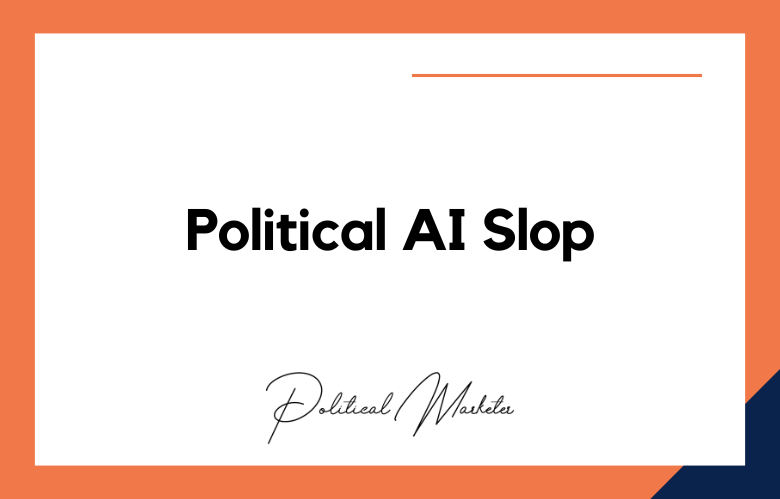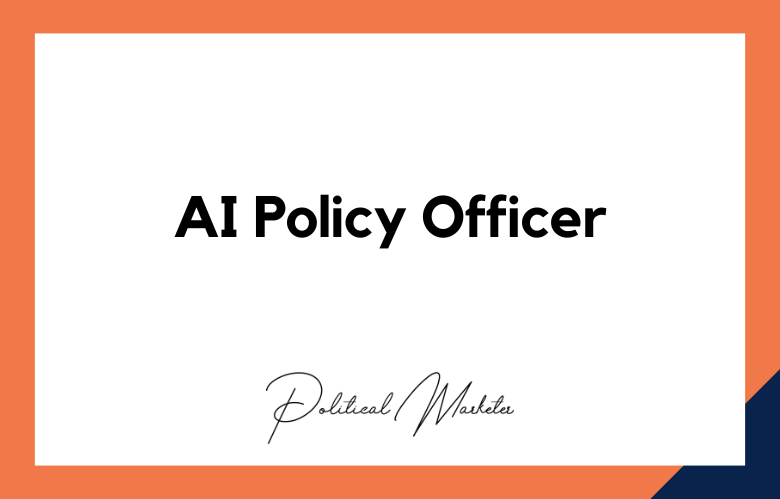Politics and technologies are crossing paths, and data-driven multi-touch planning is becoming increasingly important in political campaigns. Gone are the days of relying unthinkingly on what worked ten or twenty years ago.
Today’s political campaigns need a new approach that leverages data to get an edge over the competition. Explore how data-driven multi-touch planning can impact political campaigns. Buckle up, and let’s dive in.
What is Multi-Touch Planning?
Multi-touch planning is an essential concept that refers to the strategic planning of communication with voters as they move through their decision journey. People typically need multiple contacts with a campaign before deciding how to vote.
Using multi-touch planning, campaigns can identify where their voters are along the decision journey and provide them with the necessary information to nudge them closer to the desired outcome.
Why is Data-Driven Multi-Touch Planning Important?
The key to multi-touch planning in political campaigns is data analysis. By analyzing data, campaigns can identify persuasion zones, specific areas where voters are more likely to be swayed.
Campaigns can use data to determine which communication channels voters use to find out about the candidates and optimize their strategies utilizing the most impactful channels.
It also helps to reduce campaigns’ mistakes in political advertising because each touch the voter receives can be more tailored.
How Does Data-Driven Multi-Touch Planning Work?
Data-driven multi-touch planning uses voter data to develop and deliver tailored messages to voters.
Because campaigns have access to data on voters and which channels are most effective in reaching them, they are better equipped to deliver a consistent, relevant, and personalized message to these voters through these channels.
Data-driven multi-touch planning continually adapts based on feedback from voters and can respond to changes in the market.
Digital marketing tools such as social media platforms can be integrated to check the effectiveness of multi-touch and online messaging strategies.
Uncovering the Benefits of Data-Driven Multi-Touch Planning for Political Campaigns
The world has seen a significant technological shift in recent years, affecting political campaigning significantly. In today’s world, it’s almost only possible to win an election using modern campaigning tools.
In recent years, data-driven multi-touch planning has been one of the most effective strategies.
Multi-touch planning refers to using multiple campaign touchpoints to reach out to voters. These touchpoints could include phone calls, emails, targeted ads, and direct mail.
Data-driven multi-touch planning uses data mining techniques to identify the most influential touchpoints for each voter, making this approach highly personalized for conducting a political campaign.
Data-Driven Multi-Touch Planning for Political Campaigns: The Key to Winning Elections
Political campaigns can be the most challenging to execute because voters can be unpredictable. Developing an effective campaign strategy is critical, but this can be more of a guessing game than anything else.
Thankfully, with advancements in digital marketing and big data, running effective political campaigns has never been easier.
Multi-touch planning is a technique that allows political campaigns to reach their targeted audience with personalized messaging across different platforms several times through the election cycle. I will delve into all you need to know about multi-touch planning.
The first step in multi-touch planning is data collection. Your campaign team should gather as much information as possible about the voter’s interactions, preferences, and interests. By analyzing this data, campaigns can develop a compelling message that resonates with voters.
Challenges that Come with Data-Driven Multi-Touch Planning
Complexity
One of the primary challenges of data-driven multi-touch planning is its complexity. The process involves collecting data from multiple touchpoints, such as email campaigns, social media ads, website visits, etc.
Managing and analyzing everything effectively takes time with so many different data sources.
To overcome this challenge, companies must develop a solid understanding of their customer journey and the metrics that matter most to them. By doing so, they can create a framework that allows them to track and measure the effectiveness of their marketing campaigns.
Lack of Standardization
Another critical challenge of multi-touch planning is more standardization across different platforms. Each platform has its own method of analyzing data, making it difficult to consolidate information and gain a clear picture of overall performance.
To mitigate this issue, companies should develop a universal tracking system to capture data consistently across all channels. They should create a standardized approach for analyzing metrics to ensure accurate and actionable insights.
Integration
Multi-touch planning requires a great deal of integration between different platforms and systems.
Businesses must integrate their CRM, marketing automation, and analytics tools to ensure they have a complete picture of their customers and their behaviors.
Not only does this enable better decision-making, but it also streamlines business processes, improves efficiency, and increases agility.
Companies should identify gaps in their tech infrastructure to facilitate integration and invest in tools to connect different systems.
Attribution Bias
One of the most significant risks of multi-touch planning is attribution bias, where companies may over-value specific touchpoints in their customer journey and under-value others. This can lead to skewed data and ineffective marketing strategies.
To avoid attribution bias, companies should use a robust, data-driven approach to attribution modeling and avoid relying solely on gut instincts. This means understanding how each touchpoint contributes to conversion and using advanced analytics tools to uncover insights.
Lack of Expertise
Data-driven multi-touch planning requires specialized expertise that many businesses need to possess in-house. This can create a skills gap that may hinder their ability to manage their data and make informed decisions effectively.
To overcome this challenge, companies can invest in training and development programs for their teams, outsource their data management to qualified service providers, or hire professionals with specific expertise.
Conclusion:
Data-driven multi-touch planning is a valuable weapon in political campaigns. By utilizing data-driven planning, campaigns can deliver tailored messages to voters via multiple touchpoints to influence their decisions.
Although challenges can arise, the benefits of using data-driven multi-touch planning cannot be overstated. It is the future of political campaigning.
Call: +91 9848321284
Email: [email protected]
Multi-Touch Planning for Political Campaigns: FAQs
What Is Multi-Touch Planning In Political Campaigns?
Multi-touch planning involves engaging voters through multiple communication channels over time, ensuring repeated exposure to campaign messages.
Why Is A Data-Driven Approach Essential For Multi-Touch Campaigns?
Data helps identify voter behavior, preferences, and optimal touchpoints, enabling precise targeting and message sequencing across platforms.
How Does Multi-Touch Planning Improve Voter Engagement?
It reinforces key messages through varied formats and platforms, increasing recall, trust, and likelihood of action (e.g., voting or donating).
What Channels Are Used In Multi-Touch Political Campaigns?
Common channels include social media, email, SMS, door-to-door canvassing, television, digital ads, print, and events.
How Many Touchpoints Are Ideal Before A Voter Takes Action?
Studies show that, depending on issue sensitivity and demographics, it often takes 7–12 meaningful touchpoints to influence a voter’s decision.
What Role Does Voter Journey Mapping Play In Multi-Touch Strategy?
It allows campaigns to design intentional paths from awareness to action, aligning the right message with the voter’s stage in the journey.
How Is Timing Important In Multi-Touch Political Messaging?
Effective campaigns strategically schedule touchpoints based on voter behavior, election deadlines, and media consumption patterns.
Can AI Help Optimize Multi-Touch Campaign Planning?
Yes, AI can analyze engagement data, predict voter responsiveness, and personalize timing and content for each segment.
How Do You Measure Success In A Multi-Touch Campaign?
Metrics include engagement rate, response rate, conversion rate (e.g., signups, donations), and final voter turnout in targeted regions.
What Types Of Data Fuel A Multi-Touch Political Strategy?
Demographic data, voter history, online behavior, issue preferences, geolocation, and CRM insights inform targeting and content.
How Do Campaigns Avoid Message Fatigue With Multiple Touches?
By varying content formats, spacing messages strategically, and using personalization to keep interactions relevant and non-repetitive.
Is Multi-Touch Planning Effective For First-Time Voters?
Yes. First-time voters often require more engagement and reassurance, making repeated, trust-building touchpoints highly effective.
What Is The Role Of A CRM In Multi-Touch Campaign Execution?
CRMs help manage voter databases, automate follow-ups, personalize messaging, and track the effectiveness of each interaction.
Can Multi-Touch Planning Be Used For Volunteer Recruitment?
Absolutely. Campaigns can engage potential volunteers through targeted outreach, storytelling, follow-ups, and onboarding sequences.
What Are Some Common Mistakes In Multi-Touch Campaigns?
Errors include inconsistent messaging, poor timing, lack of data segmentation, ignoring offline channels, and failing to track performance.
How Should Offline And Online Touchpoints Be Integrated?
A cohesive plan should link digital efforts (like social ads or emails) with ground-level actions (like rallies or door-knocking) for unified messaging.
What Tools Support Multi-Touch Political Campaign Management?
Tools include marketing automation platforms, CRMs, voter targeting software, ad schedulers, and analytics dashboards.
How Can Multi-Touch Planning Improve Fundraising Efficiency?
Campaigns increase conversion rates and donor retention by targeting the right donors with personalized appeals across multiple channels.
What Is The Difference Between Single-Touch And Multi-Touch Campaigns?
Single-touch campaigns rely on one interaction, while multi-touch campaigns build layered relationships through various engagements.
Can Multi-Touch Planning Be Customized For Local Elections?
Yes, data-driven strategies can be hyper-targeted to local constituencies, aligning messaging with regional issues and voter concerns.










